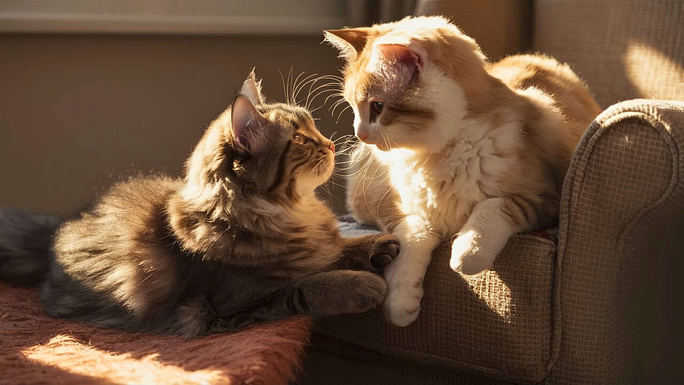
Cats are fascinating creatures with unique personalities and needs. While some cats thrive in a multi-cat household, others prefer to be the sole feline resident. Even in homes with multiple cats who generally get along, there are times when separation becomes necessary. Whether you're introducing a new cat, managing a conflict, or dealing with a medical condition, knowing how to keep your cats separate is crucial for their well-being and your peace of mind.
There are several reasons why you might need to separate your cats:
Introducing a New Cat: Gradual introduction is key to helping cats adjust to each other. Separation allows them to get used to each other's scents and presence without feeling overwhelmed or threatened.
Managing Conflict: If your cats are fighting or displaying aggressive behavior towards each other, separation can prevent injuries and reduce stress.
Medical Reasons: If one of your cats is sick or recovering from surgery, separation can prevent the spread of disease and allow the cat to heal in peace.
Behavioral Issues: Separation can be used as a management tool for behavioral issues such as spraying, inappropriate elimination, or aggression.
Individual Preferences: Some cats simply prefer to have their own space and may not enjoy the company of other cats.
There are several ways to keep your cats separate, depending on your home layout and the reason for separation:
 |
 |
 |
 |
Q: How long should I keep my cats separated?
The duration of separation depends on the reason for separation and the cats' individual personalities. For new cat introductions, it can take several weeks or even months. For managing conflict, separation may be temporary or long-term.
Q: How can I tell if my cats are ready to be reintroduced?
Look for signs of relaxed body language, such as slow blinking, tail wagging, and rubbing against each other. If the cats are hissing, growling, or swatting at each other, they are not ready.
Q: What if my cats continue to fight even after separation?
If your cats continue to display aggression, consult with a veterinarian or a certified cat behaviorist. They can help you identify the underlying cause of the conflict and develop a behavior modification plan.
Keeping your cats separate can be a valuable tool for managing their behavior and ensuring their well-being. Whether you're introducing a new cat, managing conflict, or dealing with a medical condition, separation can help reduce stress and promote harmony in your multi-cat household. By following the tips and instructions outlined in this blog, you can create a safe and comfortable environment for all your feline companions.
If you're looking for high-quality pet gates to help you keep your cats separate, check out the Richell Cat Safety Gate and the Richell Convertible Pet Gate Elite. These gates are durable, easy to use, and specifically designed with cats in mind. Visit the Richell USA website today to learn more and find the perfect gate for your home.
Please complete this form and click "Submit". Our Customer Support team will gladly address your request and respond in a timely manner.
Richell USA, Inc.
Copyright © Richell, Inc.. All rights reserved